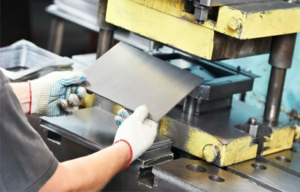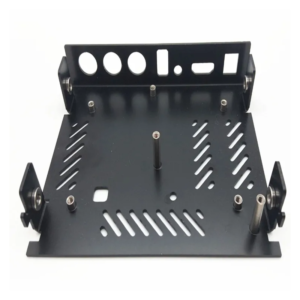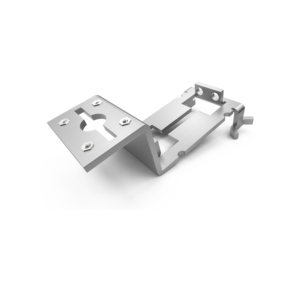Hey, Guys! Guess who’s here.All right,this is Thesun Industry.Today we’ll delve into the fascinating world of corrosion-resistant sheet metal part design. Now, I know what you’re thinking – “Corrosion? That sounds really frustrating.” Corrosion arises from environmental factors instigating a chemical transformation of refined metal into hydroxide, oxide, or sulfide forms. In ferrous metals, corrosion manifests as rust, characterized by an orange, powdery crust. Conversely, non-ferrous metals experience pitting and the development of a milky-white film due to corrosion.But worry not, because we’re about to turn this possible rust situation into a shiny, corrosion-resistant masterpiece. So grab your welding goggles and let’s get started!
Corrosion resistance is key when it comes to creating sheet metal parts that will stand the test of time. Whether you’re working on a vintage car restoration project or building industrial machinery, the last thing you want is for your hard work to succumb to the relentless forces of rust. This is where the art of designing corrosion-resistant sheet metal parts comes into play.

First, let’s talk about exploring design strategies for environmental resilience.When contemplating design solutions, it’s pivotal to consider their environmental impact.Given the propensity for moisture to hasten corrosion, it’s imperative to steer clear of design elements that could trap moisture, dirt, salt, and other contaminants. It’s prudent to adopt design choices that promote efficient drainage and drying mechanisms for components, particularly in environments prone to humidity or exposure to liquids. By prioritizing such considerations, we not only enhance the longevity and durability of the product but also contribute to sustainable practices that mitigate environmental degradation.
But it’s not just about raw materials, design and manufacturing processes also play a vital role in making corrosion-resistant sheet metal parts. Precision is key, folks. Every bend, cut and weld must be made with the utmost care to ensure that the finished product is not only structurally sound but also resistant to the elements.
Now let’s talk about optimizing collaboration with your fabrication partner.Engaging your fabricator early in the design process is paramount for achieving optimal results. At Approved Sheet Metal, we extend our expertise to evaluate and refine precision sheet metal designs, proactively identifying and addressing any potential challenges. By fostering open communication regarding the intended application of your component, we can provide valuable insights into material selection and recommend effective anti-corrosion strategies. Our collaborative approach ensures that your design not only meets your specifications but also withstands environmental factors, enhancing its longevity and performance.


Then,choosing non-corrosive materials is the one of important thing.Selecting the right material is paramount to prevent corrosion in precision sheet metal projects. Here at Approved Sheet Metal, we offer a range of options tailored to your specific needs:
- Stainless Steel: Renowned for its chromium content, stainless steel forms a protective oxide layer that resists corrosion, ensuring longevity and durability.
- Aluminum: Grades 1xxx, 3xxx, and 5xxx exhibit excellent resilience in corrosive environments. Anodizing further enhances corrosion resistance in other aluminum grades, providing added protection.
- Superalloys: Engineered with nickel, cobalt, or iron, superalloys are favored by aerospace and medical industries for their superior corrosion resistance and exceptional mechanical properties.
- Copper Alloys: Bronze and brass, among other copper alloys, offer robust corrosion resistance, making them ideal choices for various applications.
- Titanium: Known for its passive oxide layer, titanium boasts excellent corrosion resistance, ensuring reliability in demanding environments.
By leveraging these materials and our expertise, we can help you select the most suitable option for your project, ensuring optimal performance and longevity, even in corrosive conditions.
Caution:
Carbon steel exhibits a high susceptibility to corrosion, making it prone to rust even upon contact with moisture from human hands. Protective coatings are essential for all carbon steel components, regardless of their exposure to harsh conditions.
During welding, carbon steel emits toxic fumes due to the heat generated. However, employing secondary processes to prevent corrosion will also mitigate the material’s toxicity, ensuring safety and compliance with regulations.
Finally,lets talk about the protective coating.Below we have written out a few of the common types.
Chrome Plating for Corrosion Resistance
Hard chrome plating offers effective corrosion resistance, while black chrome plating provides enhanced protection against corrosion.
Pre-plated materials are available, but once cut, exposed edges may rust over time. For critical corrosion resistance, it’s advisable to start with unplated material and plate the part after fabrication.
Powder Coating for Corrosion Protection
Powder coating forms a durable polymer layer on the part’s surface, providing corrosion resistance. However, its conductivity limitations make it unsuitable for certain applications.
Anodizing for Enhanced Protection
Anodizing enhances the natural oxide layer on materials, adding to its anti-corrosion properties. It also offers aesthetic options with various color choices.
Painting as a Cost-Effective Solution
Wet paint provides a cost-effective anti-corrosion solution and improves the part’s appearance. While effective, it may be susceptible to scratches or chips, exposing the metal.
Galvanizing for Robust Corrosion Prevention
Galvanizing chemically bonds with the metal, forming a strong physical barrier against corrosion. Widely used in various industries, galvanizing offers reliable protection for products like bridges and automobiles.
Now, guys, you’ve mastered the art of making corrosion-resistant sheet metal parts. It blends science, precision and creativity, all to create parts that stand the test of time. Hey, if you’re as passionate about sheet metal crafting as we are, be sure to stop by our branch and check out our latest creations. Let’s prevent rust together and take the world of sheet metal design to new heights of corrosion resistance!

